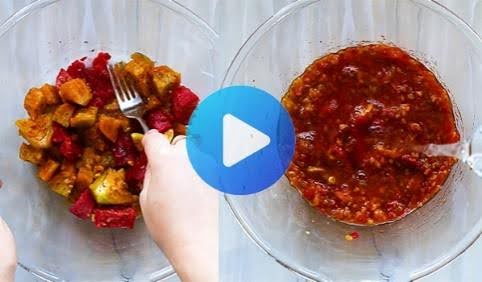Hey everyone, it’s great to connect with you again. As someone deeply involved in fitness and helping people, especially women, navigate their weight loss journeys, I spend a lot of time looking at what works. We talk a lot about diet and exercise, which are absolutely the cornerstones of getting healthier and managing weight. But sometimes, little additions to our routine can give us a helpful nudge.
For years, green tea has been the darling of the wellness world when it comes to drinks that might help with weight loss. You hear about it everywhere. And listen, green tea is great. It has health benefits, and many people enjoy it. But I want to talk about another player from the East, one that I think deserves a lot more attention, especially if you’re looking for something to support your weight management goals. It’s a traditional brew that might just surprise you with its potential.
We’re often looking for that extra edge, that simple swap or addition that makes our efforts feel more effective. While there’s no magic potion for weight loss (and I’ll always be the first to tell you that), exploring different natural options can be beneficial. It keeps things interesting, and sometimes, you find something that really resonates with your body and your lifestyle. So, let’s move past the usual suspect for a moment and dive into this other fascinating Eastern tonic.
Introducing: The Power of Nagano Tonic for Powerhouse Weight Loss
What is This Mysterious Tonic Anyway?
Okay, let’s pull back the curtain. The tonic I’m excited to talk about is Oolong tea.
Maybe you’ve seen it on a menu or tucked away on a shelf in the tea aisle. Oolong isn’t as famous as its green or black tea cousins in the West, but in places like China and Taiwan, it’s a big deal, enjoyed for centuries not just for its taste but for its perceived health properties.
So, what makes Oolong different? It all comes down to how the tea leaves are treated after they’re picked. All true teas (green, black, white, Oolong, Pu-erh) come from the same plant, Camellia sinensis. The difference lies in oxidation – how much the leaves are exposed to air after harvesting.
- Green tea: Gets minimal oxidation. The leaves are quickly heated (steamed or pan-fired) to stop the process, preserving their green color and fresh, grassy flavor.
- Black tea: Is fully oxidized. The leaves are allowed to wither, roll, and sit in the air, turning them dark brown or black and giving them a stronger, more robust flavor.
- Oolong tea: Sits somewhere in the middle. It’s partially oxidized. The leaves are withered, shaken, and allowed to oxidize for a specific period before being heated. This oxidation level can range quite a bit, from maybe 10% to 80%.
This “in-between” processing gives Oolong tea its unique characteristics. It doesn’t have the sharp grassiness of some green teas or the deep boldness of black teas. Instead, Oolong offers a huge range of flavors, from light and floral to dark and roasted, depending on how it was made. It also means it contains a unique mix of the beneficial plant compounds, called polyphenols, found in both green and black teas. Think of it as getting a bit of the best of both worlds.
The Science Bit: How Might Oolong Help with Weight?
Now, let’s get to the part you’re probably most curious about: how could drinking Oolong tea possibly help with weight loss? Remember, I always emphasize that tea is a helper, not the main event. Diet and exercise do the heavy lifting. But here’s what some research suggests Oolong might do:
- Boosting Metabolism: This is the most talked-about potential benefit. Metabolism is the process by which your body converts what you eat and drink into energy. A faster metabolism means you burn more calories, even at rest. Some studies, mostly smaller ones or those done in labs, suggest that the polyphenols in Oolong tea might slightly increase metabolism and encourage the body to burn more fat for energy. This effect is sometimes called thermogenesis – basically, slightly turning up your body’s calorie-burning furnace. The effect isn’t huge, we’re not talking about melting pounds away just by sipping tea, but even a small boost, consistently over time, could potentially contribute to weight management.
- Improving Fat Burning (Fat Oxidation): Related to metabolism, some research hints that Oolong tea might specifically encourage your body to use stored fat for fuel. Again, the compounds in the tea are thought to play a role here. Imagine your body has two main fuel sources: carbohydrates (from sugars and starches) and fat. Some studies propose that Oolong might nudge the body to rely a bit more on the fat reserves. This could be particularly relevant when combined with exercise.
- Polyphenol Power: Oolong tea contains a mix of polyphenols, including some you find in green tea, like EGCG (epigallocatechin gallate), and others more characteristic of black tea, like theaflavins and thearubigins, formed during oxidation. These compounds are powerful antioxidants, meaning they help protect your body’s cells from damage. While antioxidants are good for overall health, some researchers believe these specific polyphenols might also interact with enzymes involved in fat storage and breakdown.
Important Caveat: I need to be really clear here. Much of the research on Oolong tea and weight loss involves small studies, studies on animals, or looking at isolated compounds in a lab. We need more large-scale, high-quality studies in humans to be certain about these effects and how significant they are in real-world weight loss. So, think of Oolong as potentially supportive, based on early science, rather than a proven weight loss tool on its own.
Beyond the Scale: Other Reasons to Consider Oolong
Weight management is important for health, but Oolong tea might offer other benefits too, contributing to your overall well-being:
- Heart Health: Like green tea, some studies link Oolong tea consumption with potential benefits for heart health, like supporting healthy cholesterol levels and blood pressure. The antioxidants likely play a role here.
- Stress Reduction: The act of preparing and sipping tea can be calming in itself. Oolong tea also contains an amino acid called L-theanine, which is known for promoting relaxation without drowsiness. Managing stress is crucial for weight loss, as high stress levels can lead to cravings and fat storage, especially around the belly.
- Gut Health: Emerging research is looking into how tea polyphenols might positively influence the bacteria living in our gut. A healthy gut microbiome is increasingly linked to better weight management and overall health.
- Brain Function: The combination of caffeine (yes, Oolong has caffeine, usually less than black tea but more than green tea) and L-theanine might help improve focus and alertness.
These potential added benefits make Oolong an attractive choice for a daily beverage, contributing to more than just your weight goals.
Fitting Oolong Tea into Your Weight Loss Plan
Okay, so you’re interested in giving Oolong tea a try. How do you actually use it as part of your healthy lifestyle? Here’s my practical advice:
- It’s an Assistant, Not the Boss: Please hear me on this: Oolong tea cannot replace a healthy diet and regular exercise. Think of it as a supporting player. You still need to focus on eating nutritious foods like vegetables, fruits, lean proteins, and whole grains, and moving your body regularly. Drinking Oolong while eating junk food and sitting on the couch won’t lead to weight loss.
- Swap, Don’t Just Add: One of the best ways to use Oolong is to replace high-calorie, sugary drinks with it. Swap out that soda, sugary juice, or fancy coffee drink for a cup of unsweetened Oolong. This simple swap can save you hundreds of calories a day, which adds up significantly over time.
- How Much is Sensible?: There’s no official recommendation, but drinking 2-4 cups of Oolong tea per day seems reasonable for most healthy adults. Starting with 1-2 cups and seeing how you feel is a good approach. More isn’t necessarily better, especially due to the caffeine content.
- Timing Your Tea: You can drink Oolong tea at various times. Some people like it in the morning for a gentle energy boost. Others enjoy it mid-afternoon to combat a slump. Some research suggests drinking it before or during exercise might slightly enhance fat burning during the workout, but the effect is likely small. Avoid drinking it too close to bedtime if you’re sensitive to caffeine.
- Keep it Clean: Brew your Oolong tea with hot water and drink it plain. Adding sugar, honey, milk, or cream adds calories and negates the potential benefits of swapping out sugary drinks. If you find the taste too plain initially, try a squeeze of lemon or a sprig of mint.
- Brewing Basics: Brewing Oolong can be simple. Generally, you use water that’s hot but not boiling (around 185-205°F or 85-96°C, depending on the type of Oolong). Steeping time can vary from 1 to 5 minutes. Lighter Oolongs usually need less time and lower temperatures, while darker ones can handle hotter water and longer steeping. Many Oolong leaves can be steeped multiple times, with the flavor changing slightly with each infusion. Experiment to find what you like.
- Quality Matters: Look for loose-leaf Oolong tea if possible, as it’s often higher quality than tea bags. Explore different varieties – some are light and floral (like Tieguanyin), while others are dark and roasted (like Da Hong Pao). Trying different types can make it a more enjoyable experience.
Oolong vs. Green Tea: The Showdown?
So, should you ditch your green tea for Oolong? Not necessarily. It’s not really a competition. Both green tea and Oolong tea come from the same plant and offer potential health benefits thanks to their polyphenol content.
- Similarities: Both contain caffeine and L-theanine. Both contain antioxidants, including EGCG. Both have been studied for potential roles in metabolism and weight management. Both are low-calorie beverages when consumed plain.
- Differences: The main difference is the oxidation level, which affects the specific types and amounts of polyphenols and the flavor profile. Green tea generally has more EGCG, while Oolong has a unique mix that includes compounds formed during partial oxidation. Oolong’s caffeine content is often between that of green and black tea. The taste is also distinctly different.
My take? If you enjoy green tea, keep drinking it. If you’re curious about Oolong or find green tea a bit too grassy, Oolong offers a wonderful alternative with its own set of potential perks and a diverse flavor range. You could even enjoy both at different times of the day. The “superstar” status I mentioned in the title is more about bringing Oolong out of the shadows and giving it the recognition it deserves as a potentially valuable part of a healthy lifestyle, just like green tea.
Why Oolong Might Resonate, Especially for Women
As a consultant focusing often on women’s health and fitness, I see how weight management can be particularly complex. Hormonal shifts throughout the month and different life stages (like perimenopause and menopause) can significantly impact metabolism, appetite, and where the body tends to store fat. Stress levels also play a huge role, and let’s be honest, modern life throws a lot at women.
While Oolong tea isn’t a specific remedy for hormonal issues, some aspects might be supportive:
- Stress Management: As mentioned, the L-theanine in Oolong promotes relaxation. Incorporating a tea ritual into your day – taking a few minutes to brew and sip mindfully – can be a valuable stress-reduction technique. Lowering chronic stress can help regulate cortisol, a stress hormone linked to increased appetite and belly fat storage.
- Metabolic Support: While metabolism naturally changes with age and hormonal shifts, anything that offers even mild metabolic support, as Oolong potentially does, could be seen as helpful.
- Hydration: Staying well-hydrated is crucial for metabolism and overall health. Unsweetened Oolong tea contributes to your daily fluid intake.
- Replacing Cravings: Sometimes, a warm, flavorful cup of Oolong can help satisfy an oral fixation or a craving for something comforting, without resorting to high-calorie snacks or drinks.
Again, it’s about support, not solutions. Oolong tea can be one small piece of a larger puzzle that includes tailored nutrition, appropriate exercise (including strength training, which is vital for women’s metabolism and bone health), stress management techniques, and adequate sleep.
Exercise and Oolong: A Potential Pairing?
We know exercise is non-negotiable for effective weight loss and overall health. Can Oolong tea enhance your workouts?
You Might Be Interested In: Exploring the Fat-Burning Benefits of Nagano Tonic
- Energy Boost: The moderate caffeine content can provide a gentle lift in energy and focus before you exercise, potentially helping you work out a bit harder or longer.
- Fat Oxidation: As we discussed, some science suggests Oolong might encourage your body to burn more fat during activity. While you shouldn’t expect dramatic results, sipping some Oolong an hour or so before your workout might slightly optimize your body’s fuel usage.
- Hydration: Drinking Oolong before or after exercise (once it’s cooled a bit) contributes to hydration, which is essential for performance and recovery.
The key is consistency. A single cup of Oolong before one workout won’t change much. But incorporating it regularly, alongside a consistent exercise routine that includes both cardio and strength training, could potentially offer synergistic benefits over time.
Nutrition Synergy: Making Oolong Work with Your Food
Oolong tea works best when it’s part of an overall healthy eating pattern.
- Partner with Whole Foods: Enjoy your Oolong alongside meals and snacks rich in fiber, protein, and healthy fats. Think salads, lean meats, fish, beans, lentils, nuts, seeds, fruits, and vegetables. Tea polyphenols might even interact positively with certain nutrients.
- Mindful Sipping: Use your tea time as a moment to check in with your hunger and fullness cues. Sometimes we reach for snacks out of boredom or habit; a warm cup of tea can provide a pause to assess if you’re truly hungry.
- Flavor Without Calories: Use Oolong’s natural flavor to satisfy your taste buds without adding sugar. If you’re trying to reduce your sugar intake, Oolong can be a great tool.
Think of Oolong as complementing your healthy food choices, not compensating for unhealthy ones.
Things to Keep in Mind: Potential Considerations
While Oolong tea is generally safe for most people, there are a few things to be aware of:
- Caffeine: Oolong tea contains caffeine, typically ranging from 30-60 mg per cup, though it can vary. This is generally less than coffee (around 95 mg) or black tea (around 45-75 mg) but more than most green teas (around 25-45 mg). If you are sensitive to caffeine, Oolong might cause jitteriness, sleep problems, or an upset stomach. Be mindful of your total caffeine intake from all sources throughout the day.
- Iron Absorption: Like other teas, Oolong contains tannins, which can slightly reduce the absorption of iron from plant-based foods (non-heme iron). If you are vegetarian, vegan, or have iron deficiency anemia, it’s best to drink tea between meals rather than with your meals.
- Interactions: If you are pregnant, breastfeeding, have a medical condition (like anxiety, heart problems, or bleeding disorders), or are taking any medications, it’s always best to talk to your doctor before adding significant amounts of Oolong tea (or any new supplement) to your routine.
Listen to your body. If Oolong tea doesn’t make you feel good, don’t force it. There are plenty of other healthy beverage options.
Making Oolong Tea a Lasting Habit
The potential benefits of Oolong tea, like any healthy habit, come from consistency. Here are a few tips to make it part of your routine:
- Find Your Flavor: Explore different types of Oolong to find one you genuinely enjoy drinking.
- Set a Ritual: Link tea time to an existing habit. Maybe it’s the first thing you do when you get to work, or something you sip while winding down (if caffeine allows) in the evening.
- Prepare Ahead: Brew a larger batch and keep it in the fridge for iced Oolong tea, especially in warmer weather.
- Keep it Visible: Store your tea somewhere you’ll see it easily.
- Track Your Feelings: Notice how you feel when you drink Oolong regularly. Do you feel more energized? Less stressed? More satisfied between meals? Paying attention to subtle positive changes can be motivating.
Don’t expect overnight miracles. Weight management is a journey, and incorporating healthy habits like drinking Oolong tea is about long-term support and well-being. It’s about finding enjoyable, sustainable practices that help you reach your goals and feel your best. So, while green tea is still a great choice, maybe it’s time to give its fascinating cousin, Oolong, a chance to shine in your cup.
Related YouTube Video
Final Thoughts
So, there you have it. Oolong tea, a traditional brew with a rich history and a complex flavor profile, is stepping into the spotlight as a potential ally in weight management. It’s not magic, and it won’t replace the hard work of eating well and moving your body. But as a delicious, low-calorie beverage packed with potentially beneficial compounds that might support metabolism and fat burning, it’s certainly worth considering. Think of it as another tool in your wellness toolkit, one that might help you feel good while you work towards your health goals. Give it a try, explore the different varieties, and see if this Eastern tonic resonates with you.







